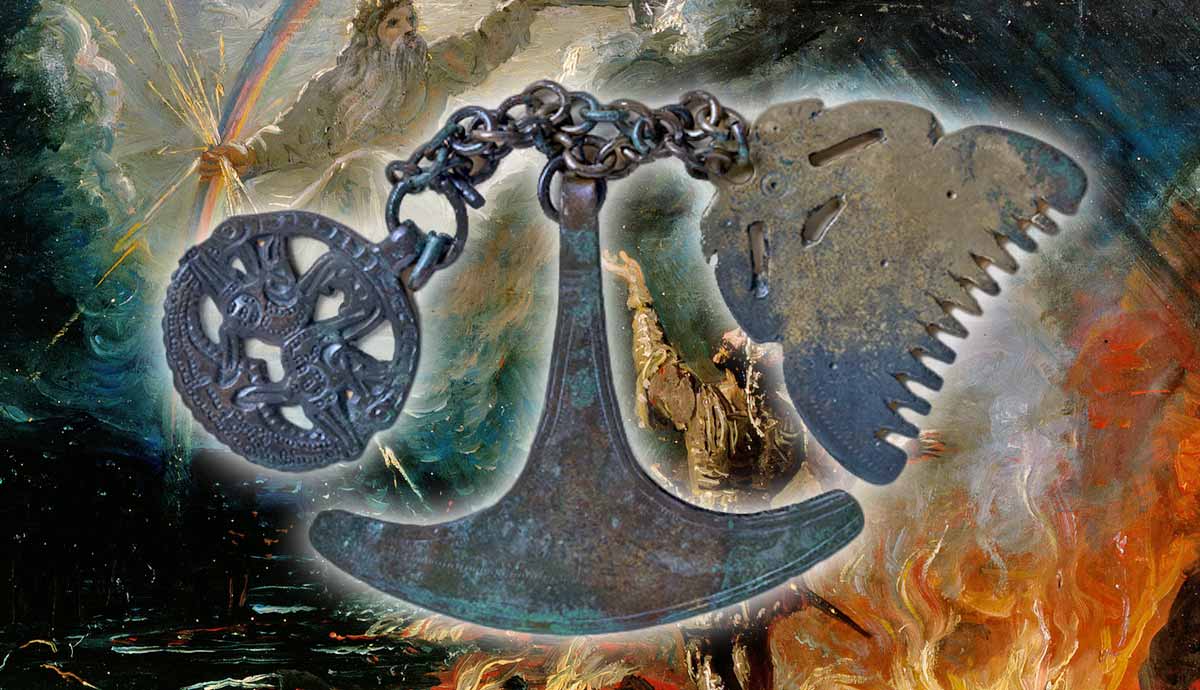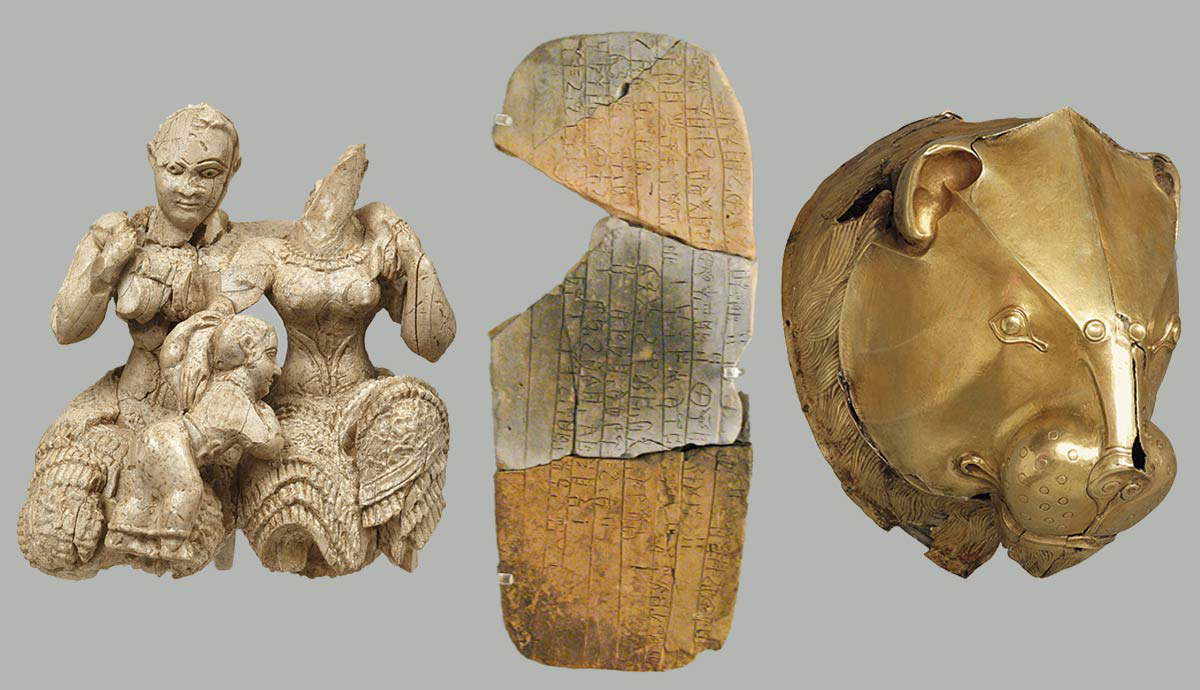
Ukko is the ancient Finnish god of lightning and thunder. He was also the lord of the sky and a god associated with protection and healing. Despite apparent similarities between Ukko and the Norse god of thunder Thor and the Greco-Roman sky god Zeus (Jupiter), Ukko is a very different deity.
While Finland is generally considered part of Scandinavia, it stands apart from its Norse neighbors because the ancient Finns were not Vikings. Migrating into Europe’s northern climes from a different region of the world, they belong to a different language and cultural group. This suggests a different ancient origin for Ukko.
1. Ukko is Not Related to Other Gods of Lightning and Thunder

Ukko is a sky god associated with the weather and fertility, and specifically with lightning and thunder — some of the most powerful manifestations of our weather. But while this seems to parallel other European deities such as Zeus in Greek myth, Jupiter among the Romans, and Thor among the neighboring Norsemen, Ukko is not related to them.
The other gods all share Indo-European roots and are based on proto-deities brought into Europe by people who migrated through the Iranian plateau. Presumably, these gods of lightning and thunder share some long-forgotten roots and evolved separately in different cultures.
Meanwhile, the Finnish people are Finno-Ugric or Uralic in origin. These people seem to have originated in the Ural Mountains, in Russia and spread east into Europe by 1,500 BCE. They settled in Finland, in northern Scandinavia as the Sami people, as well as in Estonia, and as far south as Hungary.
Therefore, Ukko probably developed from a different ancient sky god, and while not related to Zeus and Thor, he is probably related to Horagalles, a god of thunder also known as the “grandfather” in Sami shamanism, and Uku, a sky god of thunder in the Estonian tradition. The Finnish Ukko was also called Aija, which means “grandfather” in old Finnish, and “Ylijumala,” which means “supreme god.”
While not necessarily related to the Indo-European sky deities, Ukko certainly parallels them in significant ways. But while Ukko seems like Thor in his role as the god of thunder, he has more in common with Odin, the All-Father in the Norse religion, as a supreme sky god and grandfather of all.
2. We Know Very Little About Ukko

Today, we know very little about Ukko because the ancient Finns left no written records about their religion. What we do know has been pieced together from archaeology, comparative religious studies, and much later written sources.
The oldest text about ancient Finnish religion was written by the Christian Bishop Mikael Agricola in 1551, around 500 years after most Finns had converted to Christianity. In addition to translating the New Testament into Finnish at a time when there was no standard written form of the language, he also put together a list of ancient Finnish deities and their supposed function, described in verse.
The evidence presented in this text was augmented by oral folk stories, told in verse for centuries, and collected and written down by a group of ethnographers in the 19th century.
What exactly does Agricola say about Ukko?
“And when the spring-sowing was done, then the old man’s toast was drunk. For this was Ukko’s wooden vessel fetched, and the girl and the wife got drunk. Then were shameful things done there, as was both heard and seen. When Rauni Ukko’s woman huffed greatly puffed Ukko from the depths. Thus, it gave weather and the new crop.”
This text highlights the importance of Ukko because his function is described in nine lines, rather than the two given to the other deities. The toast drinking suggests ritual activities, and the meagre lines confirm that his importance as a weather deity is linked to fertility and good crops.
The lines may also allude to the “holy union” between Ukko and his wife Akka, a manifestation of the Earth, who has parallels with Thor’s giantess mother Jordr — also a personification of the Earth. Folklore suggests that it is their marriage that ensures the fertility of the land.
3. Ukko Carries a Lightning Bolt and a Thunder Axe

Zeus is famous for throwing lightning bolts, while Thor is known for carrying Mjolnir, his mighty hammer. Ukko had both! Ukko was also known to carry a bow and arrow, a nail, and a sword, while wearing a blue cloak and a “storm hat.”
Ukko had a hammer called Ukonvasara (Ukko’s hammer) and an axe called Ukonkirves (Ukon’s axe). The hammer seems to have been more common as examples of boat-shaped hammer pendants survive in the archaeological record. Today, many Finns wear the hammer as a symbol of protection, in the same way that Thor’s Hammer pendants are worn by modern “Vikings.”
Many weapons were associated with Ukko, and the Finns believed that the stone tools that had been abandoned by previous generations and were later found, often washed up when it rained, were ancient weapons of Ukko. They were called Ukonvaaja (thunderstones) and were often buried around homes as a form of protection.

Lightning bolts were also associated with Ukko, usually depicted as a snake with a serrated back. Neolithic stone carvings showing the Ukko snake-lightning symbol have been found in southern Finland, suggesting an ancient association between lightning and serpents. Poetry from the Finnish and Baltic regions suggests that snakes were associated with prosperity. Folk stories also suggest that good luck often comes with a nasty bite.
It is unclear which of Ukko’s weapons were capable of producing thunder, or perhaps they all were. But the lightning and thunder of Ukko was certainly to be feared, as described in this verse from Finnish folklore:
“Ukkoinen, father above, old man of the sky, take the golden club from its silver perch, pound the bending tree, strike fear, make the bones tremble, make the legs move quickly.”
Rainbows were also associated with Ukko, and called Ukko’s arch, and he was sometimes called the “master of the clouds” and the “father of the weather.”
4. Ukko Protected Against Evil Spirits

Ukko was often called on as a healer, and he was specifically invoked for aid during childbirth, which is unusual for a male deity. His link to healing seems to be because he was believed to control evil spirits. This in turn may be linked to his connection to the serpent.
A Finnish folklore poem from the 19th century tells the story of the hero Väinämöinen visiting the underworld, known as Tuonela. When the souls in the underworld realize that he is not truly dead, they offer him snake venom to drink. This may suggest an association between snakes and the gateways between worlds.
This is reinforced by beliefs about serpents among Tietäjät, who are Finnish shamans. They are considered mediators between the different realms or realities. In their tradition, finding a serpent under a rock can be a sign that something has recently passed between worlds, quite likely an evil spirit. But serpents could also be leveraged by these shamans to avert spells or ward off evil spirits sent by other shamans.
Ukko may have been seen as having similar powers as he wielded his serpent lightning bolts. If he was also associated with shamanism and magic, this is something else that he shared with Odin, who was a master of both Seidr and Rune magic in Norse mythology.
5. Ukko Was the Ruler of the Heavens

While it is unclear how important Ukko was in ancient Finnish religion, where he sat in relation to other gods, and what role he may have played in creation, by the Christian period he had become a supreme king of heaven who, if not a creator deity, was responsible for ensuring that the sun and the moon maintained their important places in the sky.
It is highly likely that this image of a supreme god was the result of Christian influence and the borrowing from sky deities in other religions, such as Zeus. This portrayal of Ukko is reflected in the following folklore verse collected in the 19th century.
“You Ukko, the supreme god, the highest father in the heaven, the heavenly god. Create a cloud from the northwest, send another from the west, a third one from all over. Bang them against each other, water the flintlock’s powder.”
But the idea that Ukko was a kind of supreme deity who was more concerned with the “big things,” like storms and wars, does seem possible. Finnish shamanic traditions suggest that the ancient Finns were more concerned with local spirits, which could be tutelary deities linked to a specific place, or evil spirits that have crossed over from other worlds. While it seems that Ukko had the power to command these spirits, shamans tended to deal directly with lesser spirits.
Ukko and his shamanic followers were so powerful in the Viking Age that some Norse sagas suggest that you could “buy wind” from seafaring Finnish warlocks. They would sell a rope tied with three knots. If you open one knot, you can raise a wind, if you open all three, you can raise a mighty storm from Ukko.










